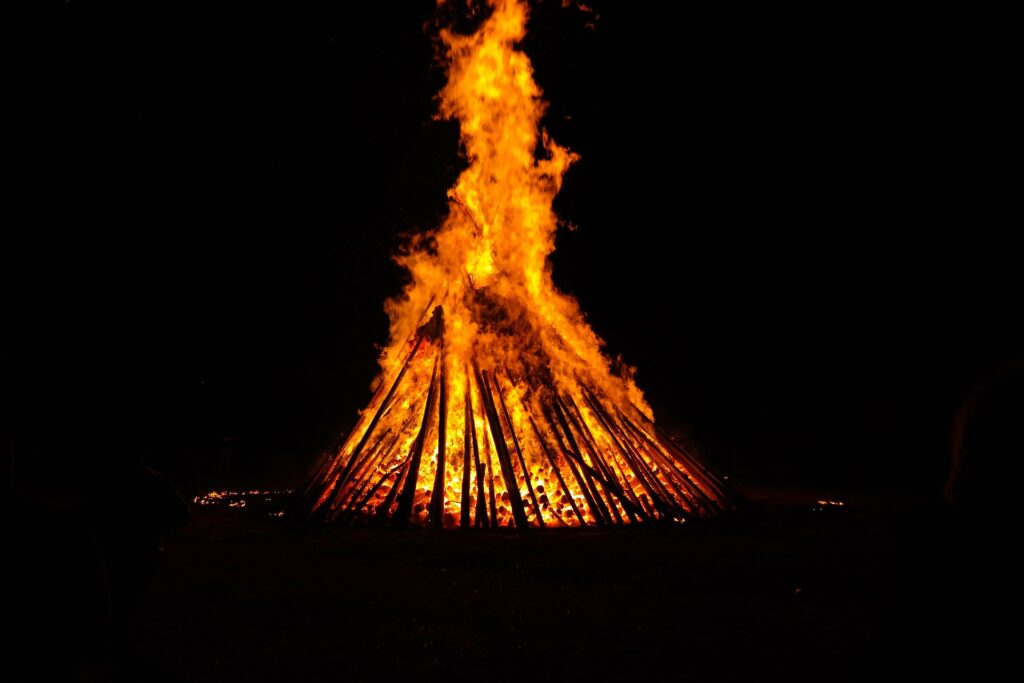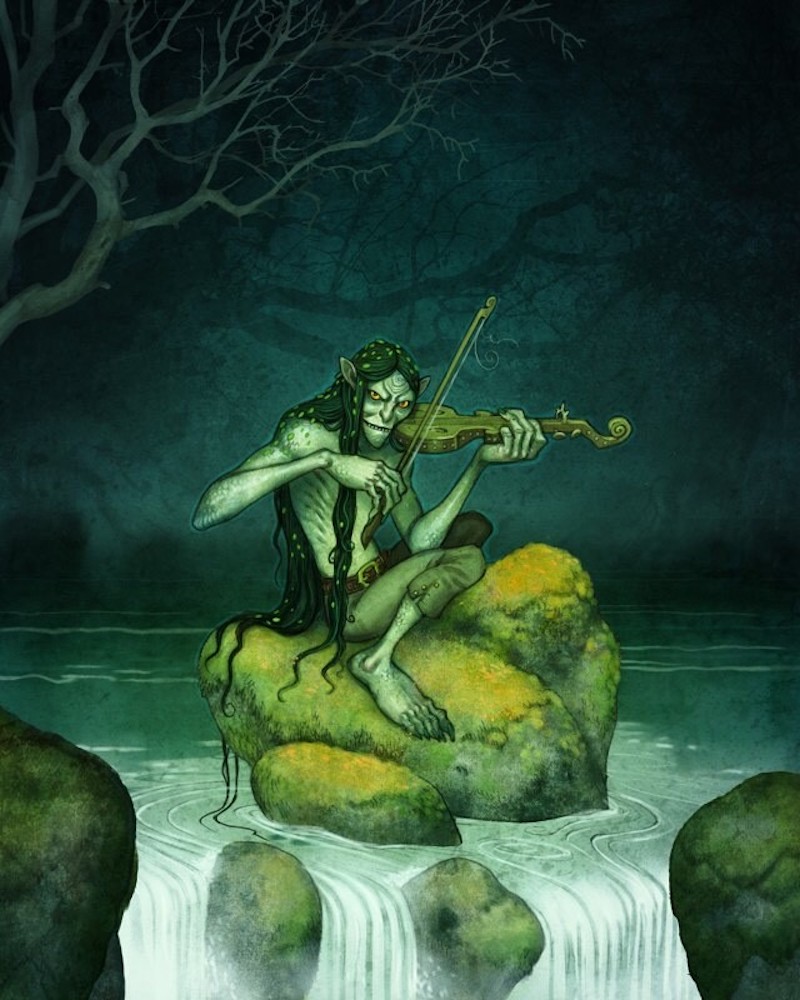While the international world hears of “Midsummer” celebrations in Sweden, Norwegians have a similar celebration around the same time referred to as “Sankthansaften”, also sometimes called “Jonsok”.
This was thought to be the birthday of Johannes the Baptist. “Jon” comes from “Johannes” and the ending “ok” is a derivative of “Jonsvaka”, meaning the church would lie awake the night before, awaiting Jon’s birth.
The midsummer day has, however, most likely originated from pagan times and is one of our oldest customs, a celebration of the turning summer.
Decorations of birch branches, rowanberries, and bird cherries were placed above each cow in the barn. The latter was said to avoid the trolls and any other supernatural powers from having any power over the cattle. People were also told to make sure nobody took their brooms!
This night was riddled with superstition, as one story from the town of Selje explains:
On Sankthans Eve, “Women” who had outgrown their baby carriage, had to walk around a rock buried in the ground three times or walk barefoot if they wanted to be able to bear children in the future.”
A lot of rules to follow if you were to have a normal life, in other words!
Another story goes, that during the midsummer night, one would find out who they would marry if they slept near an underground creek with running water, or placed Jonsok flowers on their pillow at night.
Sankthansaften was also the best time to gather medicinal herbs because at this time they were fully mature and found to be the most effective.
Another tradition is to start a big bonfire. You can find these in many places across Norway and Denmark during Sankthans.
The fire was central in the celebration of the turning of the sun. It was seen to help life-giving forces, and a symbol of strengthening of the sun, in this critical turn of seasons. The bonfire was a natural gathering spot to unite and strengthen people when they entered into a time with less sun and light.

The fire was also seen to be a powerful protection against trolls, witches, and other evil spirits. Among these supernatural creatures is the “fossegrim”.
According to Norwegian folklore, he lives near waterfalls or rivers and is a very talented violin player. He is willing to teach people how to play if they bring him a fenalår (cured mutton leg) stolen from the neighbor’s “stabbur” (outhouse) every Thursday for four weeks in a row.
This has to be done very discreetly and in secret, otherwise, the fossegrim will undress and dance naked in front of you. (I’m not making this up!)

Sometimes witch figures made out of paper were thrown into the bonfire (and still are today, mostly in Denmark but also in Norway), a tradition that was brought in by German carpenters in the 1860s.

In the old farming community, midsummer was a time to party, much like Christmas during mid-winter. This was a time for plowing and sowing and other spring chores. Everything that was supposed to be planted had been completed, and it was too early to start the harvest.
During the Middle Ages, the Church wanted to give the old celebratory days a Christian meaning, because they thought all of this superstition and celebratory drunkenness was highly immoral.
So when Christmas Day was decided as Jesus’ birthday, his conception had to have been 9 months before, i.e. March 25th. The angels announced Jesus’ birthday when Johannes’ mother, Elisabeth, was in her sixth month of pregnancy. Appropriately, Johannes’ birthday would, therefore, be three months after that date, on June 24th. This way, both Christmas and Jonsok would be ‘christened’.
Up until 1770, Jonsok (or Sankthansaften) was considered a Church Celebration. These days, Sankthans is not considered religious but simply a day when people get together, celebrate summer, eat well and drink even better… Children especially look forward to the bonfire and playing games, and young and old people dance and party into the early morning hours.
While many traditions have changed, some have not.
Food is one that has remained the same in many places in the country. Rømmegrøt is a food that still is very popular to eat on this day, enjoyed with “spekemat” (cured meats) and flatbrød (flatbread).
People also barbecue or bring picnic baskets with everything from pickled herring to sandwiches, smoked salmon, potato salads (try this one or this one!), and bread, paired with lots of beer and aquavit.
Some celebrate by the beach or take their boat out on the ocean, while others choose to spend time in their cabins in the mountains. This time of year is truly a happy and special time for all Norwegians, who really cherish and enjoy the short, but beautiful summer they have in this part of the world.
Blessed with the amazing midnight sun among stunning landscapes of fjords, mountains, and waterfalls, it’s no wonder we feel lucky to call this place home.
Especially around Sankthans!









French Canadians also celebrate Sr John baptist day on June 24th with a fire and celebrations!….had no idea of the origins of it all.
I did not know French Canadians celebrate this too! 🙂